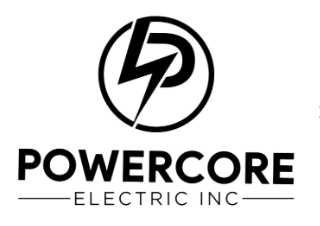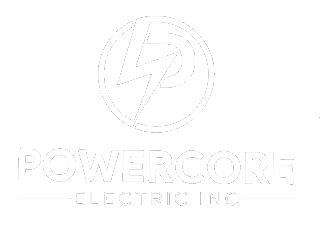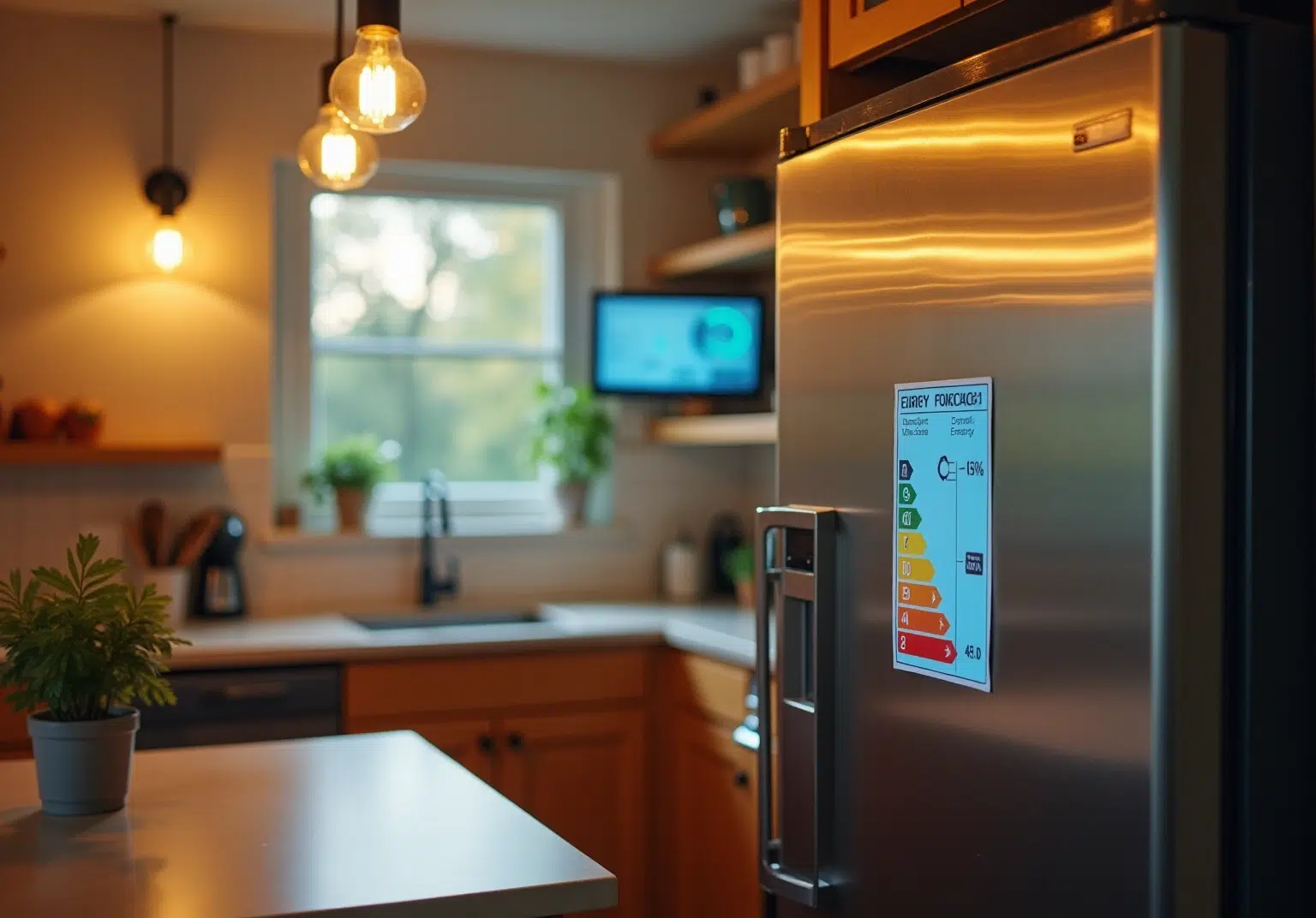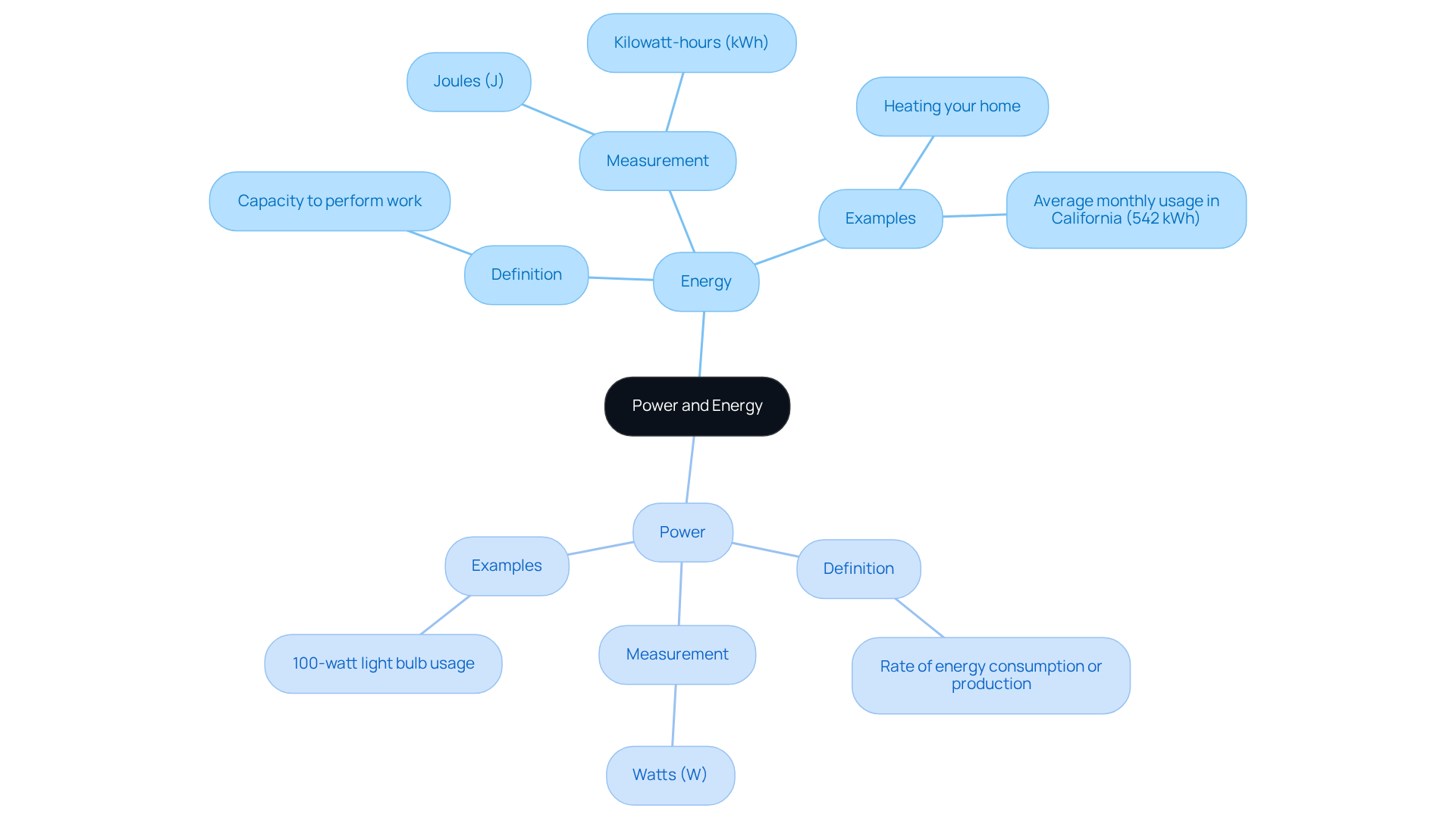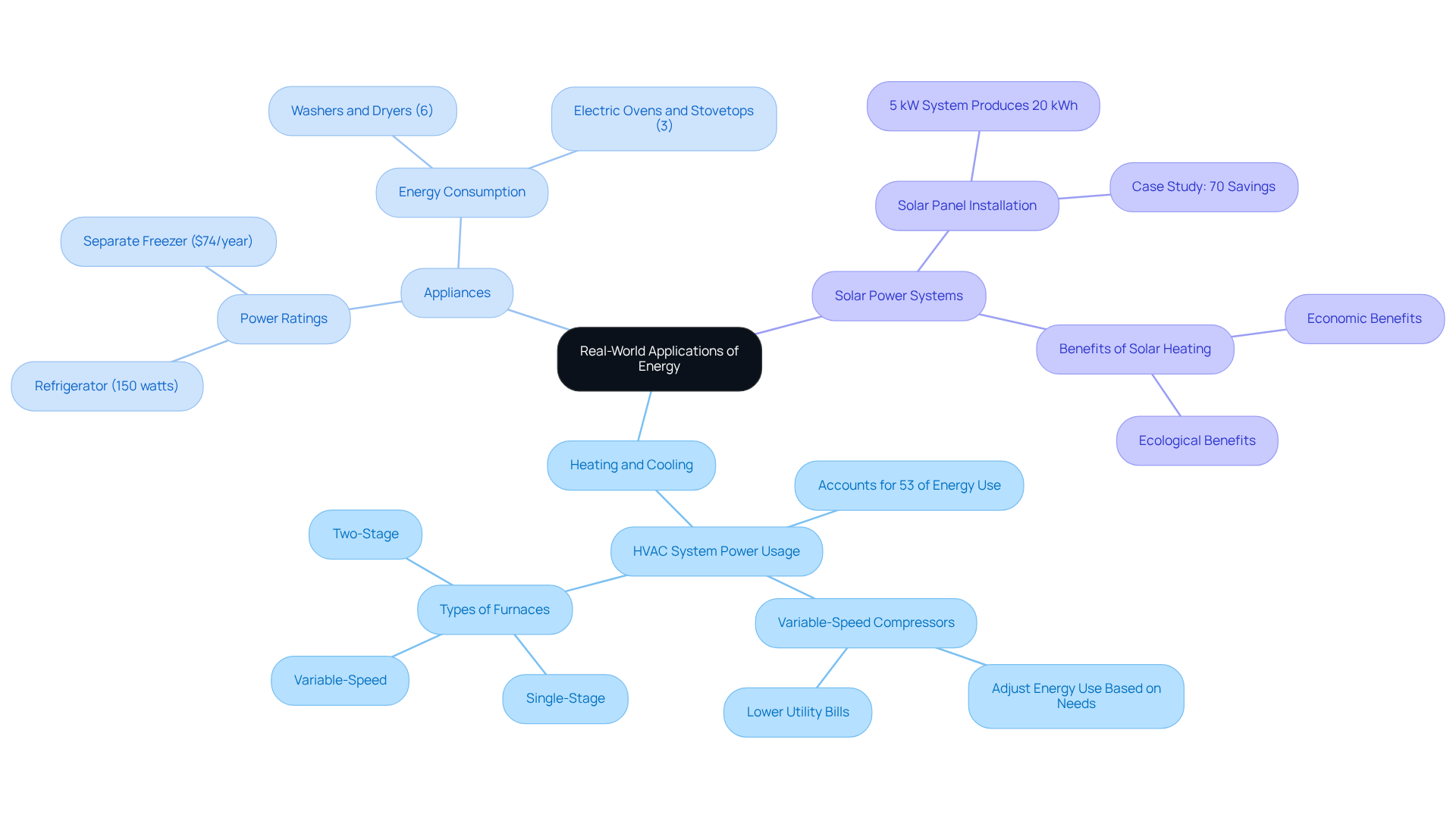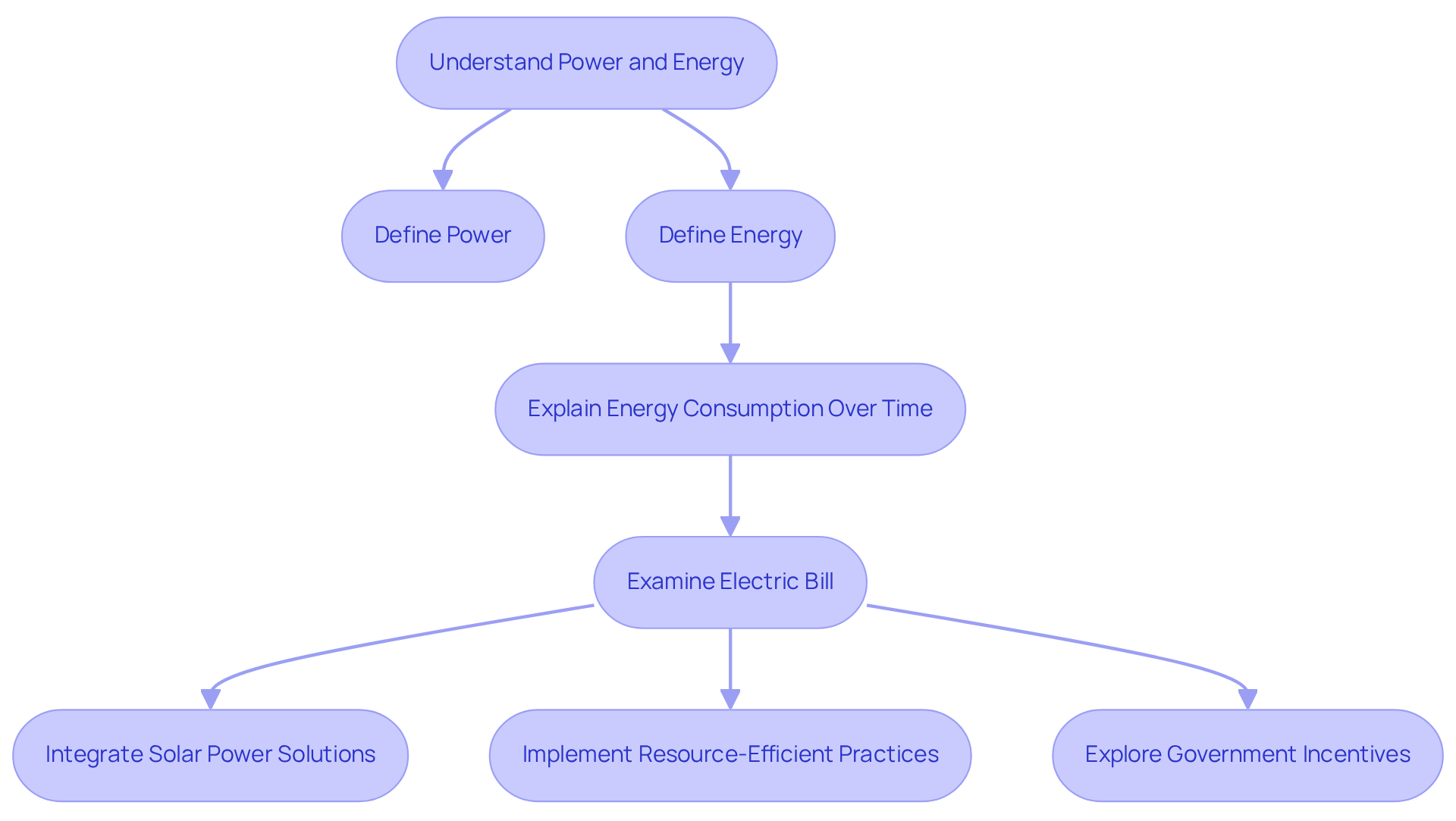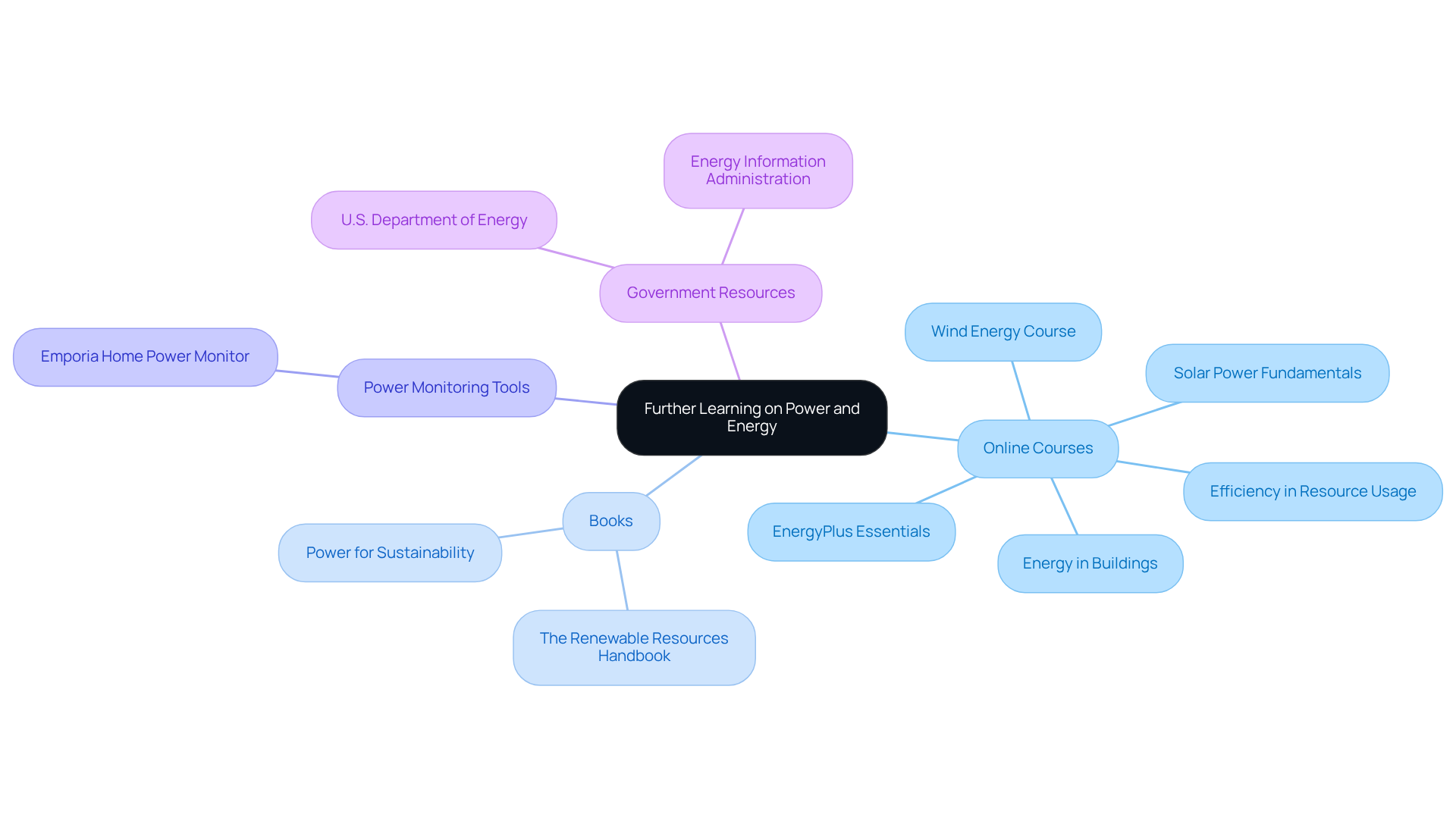Overview
In today’s world, many homeowners are understandably concerned about rising energy bills and the impact of energy consumption on the environment. It’s common to feel overwhelmed by these challenges, but understanding key concepts of power and energy can empower you to take control. Energy is the total capacity to perform work, while power is the rate at which that energy is consumed. By grasping this distinction, you can make informed decisions that not only lead to significant savings but also promote sustainability in your home.
Imagine the peace of mind that comes with knowing how to manage your energy usage effectively. Embracing solar energy and striving for energy independence are not just dreams; they are achievable goals that can transform your living environment. Together, we can explore solutions that benefit both your wallet and our planet.
Let’s take this journey towards a more sustainable future together. If you have questions or need guidance, we are here to support you every step of the way. Your commitment to understanding these concepts is the first step toward making a positive change, and we believe in your ability to create a brighter, more sustainable future.
Introduction
Understanding the intricacies of power and energy is essential for homeowners like you, who are striving for eco-conscious living. We understand that as energy bills continue to rise, it can be overwhelming. Grasping these fundamental concepts not only aids in managing costs but also empowers you to make informed decisions that promote sustainability.
What happens when the line between power and energy blurs? How can a clearer understanding lead to significant savings and a reduced carbon footprint?
Exploring these questions together can unlock the potential for a more efficient and environmentally-friendly home. Let’s work towards making your living space both sustainable and cost-effective.
Define Power and Energy
It is important for every homeowner to understand the essential concepts of electricity and sustainable sources, which can help explain power and energy. We know that can be a source of concern, and it’s important to grasp these ideas to manage them effectively.
Energy is the capacity to perform work, measured in joules (J) or kilowatt-hours (kWh). It represents the total amount of work that can be accomplished. For example, when warming your home, you are utilizing energy to increase the temperature, which directly impacts your utility bills. In 2025, California homeowners are facing an average monthly electricity usage of approximately 542 kWh, highlighting the significance of resource management in our daily lives.
Power, on the other hand, refers to the rate at which resources are consumed or produced, measured in watts (W). One watt equals one joule per second. For instance, a 100-watt light bulb consumes 100 joules of power each second it operates. Understanding this distinction is crucial for homeowners, as it is important to explain power and energy usage, which can lead to more informed decisions regarding resource consumption and potential savings.
With utility prices on the rise—over 15% hikes effective June 1, 2025—it’s common to feel overwhelmed. However, by grasping these concepts, homeowners can optimize their consumption and lower expenses. By understanding how power and vitality interact, residents can implement strategies to improve efficiency, such as upgrading heating and cooling systems, which can reduce consumption by up to 20% or more. This knowledge empowers homeowners to manage their utility costs while contributing to a more sustainable future. Together, we can work towards a brighter, more energy-efficient home.
Explore Real-World Applications
By understanding how electricity and resources work in real-life situations, homeowners can better explain power and energy, which empowers them to make improved choices about their energy consumption.
Heating and Cooling: We know that the HVAC system in your home is often one of the largest energy consumers, accounting for about 53% of your overall power usage. By grasping your system’s capacity rating, you can better explain power and energy consumption and associated costs. For instance, if your air conditioning unit is rated at 3,000 watts and runs for 5 hours, it will consume 15 kWh of electricity. This knowledge allows you to explain power and energy while exploring more efficient options, like variable-speed compressors that adjust energy use based on cooling needs, ultimately leading to lower utility bills.
Appliances: Each appliance in your home comes with a power rating that determines its electricity consumption. For example, a refrigerator might use 150 watts continuously, which can add up over time. By understanding these ratings, you can explain power and energy usage in energy-efficient appliances, helping to reduce your overall consumption footprint.
Solar Power Systems: When considering solar panel installation, it’s essential to explain power and energy, particularly focusing on both the power output (measured in watts) and production (measured in kWh). For example, a 5 kW solar system can produce about 20 kWh of power on a sunny day, significantly reducing your reliance on grid electricity. Additionally, numerous case studies illustrate the effectiveness of solar-powered heating systems in various homes. A household in Southern California, for instance, achieved over 70% savings on their utility costs after installing a water heating system with a heat exchanger. This not only lowered their expenses but also supported sustainability by minimizing their carbon footprint. These examples illustrate how solar heating technologies can explain power and energy through their diverse applications and substantial economic and ecological benefits, making them an appealing choice for environmentally conscious homeowners. Together, we can work towards a more , ensuring both financial savings and environmental stewardship.
Communicate the Differences Clearly
As homeowners, we often find ourselves grappling with the complexities of power and energy, terms that may seem interchangeable but actually represent distinct concepts crucial to explain power and energy for understanding sustainable solutions. To understand the concept of power, one must explain power and energy as the instantaneous rate at which energy is consumed. For example, when you turn on a 1,000-watt heater, it immediately draws 1,000 watts of power.
To understand how energy accumulates over time, we must explain power and energy. If that heater runs for 2 hours, it will consume 2 kWh of energy (1,000 watts multiplied by 2 hours). This distinction is vital when examining your electric bill, which charges you based on total consumption (measured in kWh) during the billing cycle rather than the power (in watts) used at any single moment. By grasping these concepts, you can better explain power and energy, allowing you to manage your energy usage more effectively and potentially leading to savings on your electric bills.
Integrating , such as and solar panels, can significantly enhance your efficiency. Imagine reducing your dependence on grid electricity through solar panels, thereby lowering your utility expenses and contributing to environmental sustainability. Additionally, many government programs offer incentives for homeowners to adopt these technologies, making them more accessible than ever before.
Simple actions, like turning off lights when you leave a room or unplugging appliances, can drastically reduce your overall power consumption. In California, where electric bills are structured with tiered rates, it is essential to explain power and energy to understand how electricity and resources impact your usage, helping you avoid unexpected charges. By embracing resource-efficient practices—such as upgrading to ENERGY STAR appliances or conducting a home efficiency audit—you can optimize your energy consumption, leading to both financial savings and a positive impact on the environment.
Together, we can explore these sustainable solutions to empower your home and foster a brighter future. If you’re ready to take the next step towards energy independence, let’s work together to find the best options for you.
Utilize Resources and Tools for Further Learning
To deepen your understanding of power and energy, we invite you to explore the following resources that can empower you on your journey towards energy independence:
- Online Courses: We understand that navigating energy efficiency can be overwhelming. Platforms like Coursera and edX offer a variety of courses focused on energy efficiency and renewable energy systems. Classes like ‘Solar Power Fundamentals‘ and ‘Efficiency in Resource Usage’ are highly rated and provide comprehensive insights that explain power and energy, helping you feel more informed and confident.
- Books: For those eager to delve deeper into how to explain power and energy concepts, consider titles such as ‘The Renewable Resources Handbook‘ and ‘Power for Sustainability.’ These books serve as excellent resources, offering detailed explorations that explain power and energy through renewable principles and practices, which can inspire your commitment to sustainability.
- Power Monitoring Tools: It’s common to feel uncertain about energy consumption. Utilizing devices like the Emporia Home Power Monitor allows you to in real-time. This valuable information empowers you to make informed choices, ultimately leading to cost savings and improved efficiency in your home.
- Government Resources: The U.S. Department of Energy and the Energy Information Administration provide a wealth of information regarding home energy use. They offer practical tips for enhancing efficiency and sustainability, guiding you in making your home more energy-efficient. Together, we can work towards a more sustainable future for our families and communities.
Conclusion
We understand that managing utility costs can be a significant concern for homeowners. Grasping the concepts of power and energy is essential not only for reducing expenses but also for promoting sustainability. By distinguishing between these two terms—energy as the total capacity to perform work and power as the rate of energy consumption—homeowners can make informed decisions that lead to meaningful savings and a lighter environmental footprint.
Key insights shared throughout this article highlight the real-world applications of these concepts within various household systems, from HVAC units to appliances and solar power installations. By leveraging knowledge about power ratings and energy consumption, homeowners can optimize their energy use, explore energy-efficient technologies, and even take advantage of government incentives for renewable energy solutions.
Ultimately, embracing a deeper understanding of power and energy empowers homeowners to lower their utility bills while fostering a more sustainable future. By adopting resource-efficient practices and exploring educational resources, we can contribute to environmental stewardship while enhancing our own energy independence. Together, let’s take proactive steps today to create a brighter, more energy-efficient tomorrow for both our homes and communities.
